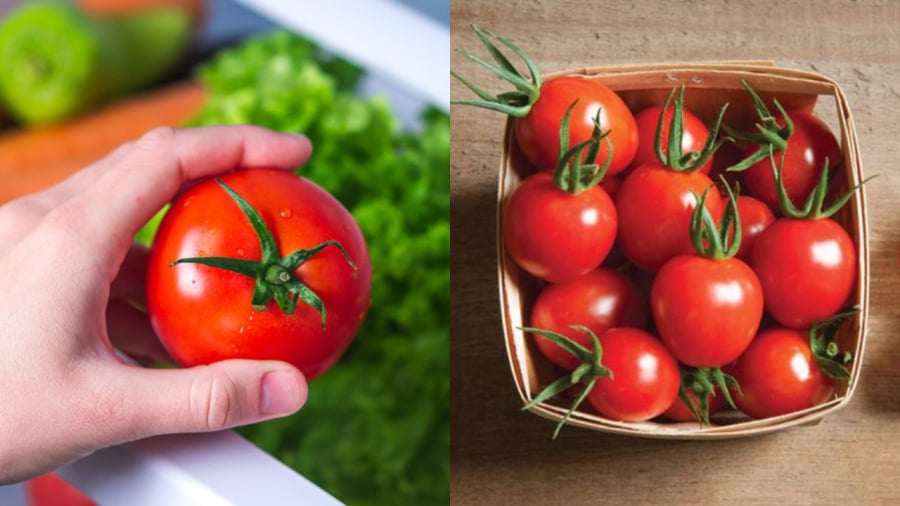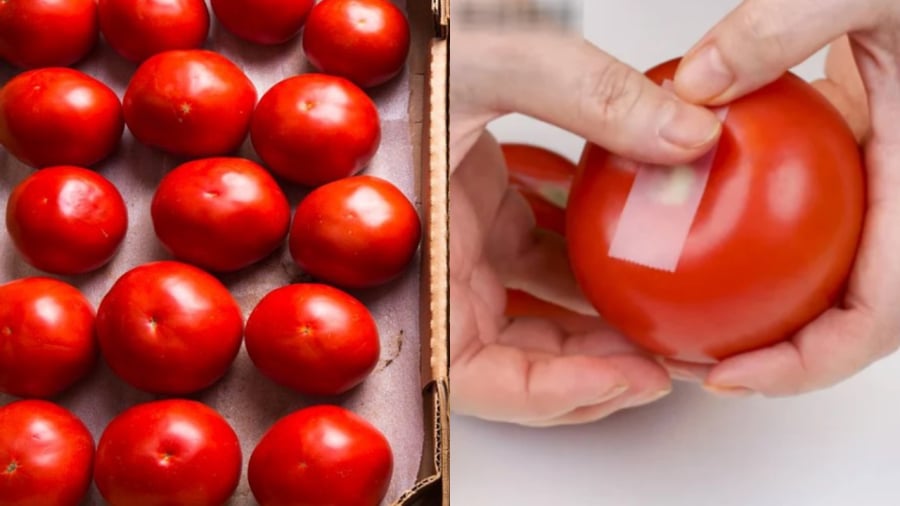Why You Shouldn’t Refrigerate Tomatoes
Tomatoes are a juicy fruit with firm flesh and a sweet-sour taste. Ripe tomatoes will have more pulp, and when cut open, you’ll find tiny seeds inside.
Tree-ripened tomatoes will undoubtedly have a more delicious flavor than ripened tomatoes.
Often, when people buy tomatoes, they store them in the refrigerator for later use. However, tomatoes are one of the foods that shouldn’t be refrigerated. This is evident in supermarkets, where tomatoes are displayed at room temperature on shelves rather than being kept in chillers like many other vegetables and fruits.

You Don’t Need to Refrigerate Tomatoes
The best way to store tomatoes is at room temperature (around 25°C or 77°F). When tomatoes are placed in the fridge, the low temperature prevents them from continuing to ripen, halting the development of their fresh flavor. Additionally, the cold can cause tomatoes to dry out and lose water, making the skin wrinkle. This makes them more prone to breaking when cut.
How to Store Tomatoes
You don’t need to refrigerate tomatoes; simply keep them out of the fridge. This frees up space in your refrigerator for storing other foods that require chilling.
Note that tomatoes should be kept in a dry, cool, well-ventilated area, away from heat sources and direct sunlight.
Avoid stacking tomatoes on top of each other, as this can cause the ones at the bottom to get crushed. If you’re storing multiple layers of tomatoes, place a sheet of paper towel in between the layers.
Some people suggest placing the tomatoes stem-side down to extend their shelf life and maintain their freshness.
Additionally, you can use tape to seal the stem end of the tomatoes. This creates a protective barrier that prevents bacteria from entering the tomatoes and helps retain their moisture.

Store Tomatoes at Room Temperature. Place Them Upside Down in a Basket/Tray or Seal the Stem End with Tape.
Before storing tomatoes, there is no need to wash them. Only rinse them when you’re ready to use them in your recipes.
You can pick slightly under-ripe tomatoes and let them ripen at room temperature. During storage, use the ripest tomatoes first for cooking.
If your tomatoes are fully ripe but you can’t eat them right away, or if the weather is extremely hot, you can store them in the coolest part of your refrigerator to prevent them from spoiling.
Whether you’re storing tomatoes at room temperature or in the fridge, keep them away from fruits like bananas, apples, and pears, as these fruits release ethylene gas, which can cause tomatoes (and other fruits) to ripen too quickly.
Cooked tomato products like soup and sauce should be refrigerated to prevent spoilage.
Cut tomatoes should also be stored in the refrigerator to prevent bacterial growth.
For long-term storage of tomatoes (up to several months or even a year), you can choose to freeze them. However, this will significantly reduce their flavor. When thawed, frozen tomatoes tend to become mushy and release water.

































